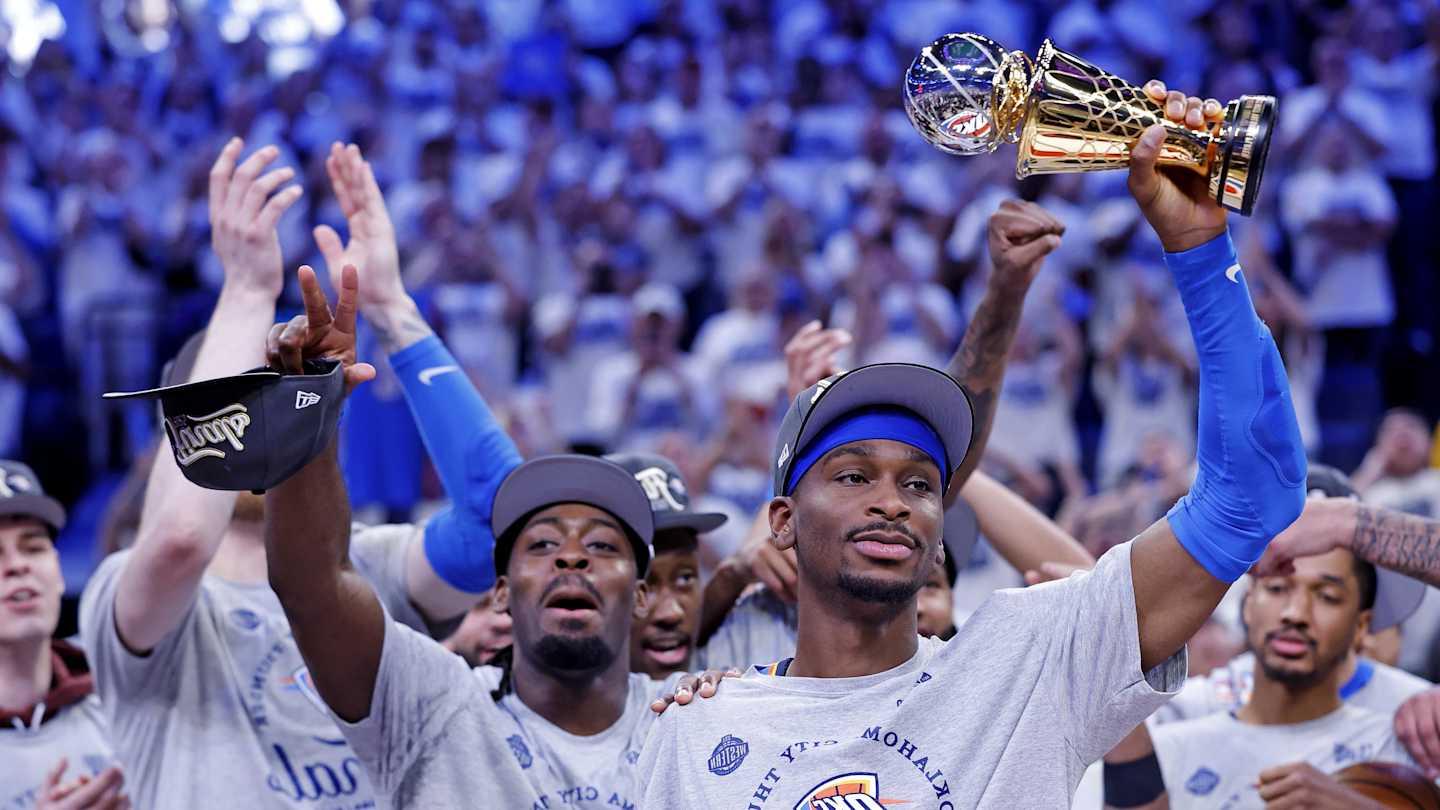TubiTV Just Hit 200 Million Users – Here’s Why
10 Perfect-Score Shows Buried on Prime Video Right Now
Earlier this week, the Oklahoma City Thunder clinched their spot in the NBA Finals by overcoming the Minnesota Timberwolves with a decisive win in Game 5. The final score of 124–94 highlighted the Thunder’s comprehensive team strength, with star players excelling in their roles and support players making significant contributions at crucial times. Aside from a disappointing loss in Game 3, OKC displayed superb basketball throughout the series.
The $3.99 Streaming Service With 500+ Oscar Winners Nobody Knows About
Cancel These 3 Subscriptions Before November 1st – Here’s Why
Visually, the difference was clear. Anyone watching this year’s Western Conference finals could easily discern the Thunder’s superior play. They demonstrated a blend of purpose, intensity, and teamwork befitting a championship-aspiring team. The Timberwolves, while skilled, were outmatched by the cohesive unit of OKC as the prospect of a championship seemed to elevate the Thunder’s performance.
The deeper metrics also reflect the Thunder’s dominance. Here are five statistics that encapsulate how OKC dispatched the Timberwolves on their way to their first NBA Finals appearance since 2012.
108—Points off turnovers
Turnovers were a significant factor in the Thunder’s game plan. Their aggressive and disruptive defensive style, combined with a team-wide focus on intercepting passes, kept the basketball in near-constant motion, setting the stage for quick transitions. This approach is proving historically effective, as the Thunder are on track to set an NBA playoff record for the best turnover differential, entering the Finals with a margin of +100.
Their dominance in this area was clearly evident in the Western Conference finals, significantly impacting the scoreboard.
Throughout the five-game series against Minnesota, the Thunder capitalized on turnovers, scoring 108 points from 87 Timberwolves turnovers, averaging 21.6 points and 17.4 turnovers per game. This was a stark contrast to the Timberwolves, who managed just 16 points off turnovers per game. OKC’s defensive pressure continually disrupted Minnesota’s offense, translating into significant scoring runs.
The Timberwolves often struggled with ball security, which played into the Thunder’s hands. OKC expertly exploited weaker ball handlers, leading to repeated scoring opportunities.
101.9—Offensive rating for lineups with Anthony Edwards and Julius Randle
One of the more surprising aspects of this year’s conference finals was how effectively the Thunder neutralized Edwards and Randle. OKC’s defense, which had already proven its mettle by stifling Nikola Jokic in the previous round, was extraordinarily effective against the Timberwolves’ key players. Over 128 minutes, the offensive rating for Minnesota with Edwards and Randle on the court was just 101.9.
To contextualize, the Washington Wizards had the lowest offensive rating in the NBA this season at 105.8. Even the 2015–16 Phoenix Suns, who finished 23–59, had a higher offensive rating at 101.5. This performance by the Timberwolves’ duo was on par with some of the least effective offenses in recent NBA history.
This level of defensive effectiveness goes beyond just a poor stretch by two players; it reflects a concerted team effort to shut down Minnesota’s primary offensive threats, a key factor in the Thunder’s control over the series.
28—Percent of Shai Gilgeous-Alexander’s points that came from the free throw line
Shai Gilgeous-Alexander’s ability to draw fouls was a notable storyline throughout the series. The MVP candidate’s frequent trips to the free-throw line spurred discussions and debates about the officiating consistency. He scored 28% of his points from free throws in the series against the Timberwolves.
This figure is slightly higher than Jalen Brunson’s 25.5% from the free-throw line in the Eastern Conference finals. Comparatively, Anthony Edwards scored 19.1% of his points from free throws. Among players averaging at least 30 minutes in the conference finals, only Josh Hart had a higher percentage at 39.2%.
Historically, these numbers are significant but not unprecedented. Last year, for instance, Boston Celtics’ Sam Hauser and Minnesota’s Rudy Gobert were in a similar range. Gilgeous-Alexander’s ability to draw fouls consistently allowed OKC to maintain control over the tempo of the game, frustrating the Timberwolves and contributing significantly to their series victory.
14—OKC five-man lineups with a positive net rating
The depth of the Thunder is a significant asset, setting them apart from many other teams. Coach Mark Daigneault’s strategic lineup rotations throughout the series against the Timberwolves showcased this depth. Eleven Thunder players averaged at least eight minutes per game, with only three players exceeding 30 minutes per game.
This strategic deployment of players allowed the Thunder to utilize 25 different five-man lineups, 14 of which had a positive net rating. The most frequently used lineup, consisting of Gilgeous-Alexander, Jalen Williams, Lu Dort, Chet Holmgren, and Isaiah Hartenstein, played 40 minutes together and achieved a net rating of 7.5. A variation of this lineup, with Cason Wallace replacing Hartenstein, posted a staggering net rating of 52.8.
While some of these numbers may be skewed by the limited minutes these lineups played, they underscore the depth and versatility of the Thunder’s roster, which has been expertly leveraged by Daigneault throughout the playoffs.
37.9—Timberwolves’ shooting percentage on shots defended by Lu Dort
The collective defensive effort of the Thunder has been noteworthy, with every player contributing to a synchronized and robust defense. This team ethos is exemplified by Lu Dort, whose individual defensive metrics are especially impressive.
Dort defended 58 shots during the conference finals, with the Timberwolves managing to shoot only 37.9% on these attempts. His presence alone seemed to alter the offensive decisions of his opponents, leading to lower shooting percentages.
Among all Thunder players who defended at least 20 shots, Dort had the lowest defended field goal percentage, establishing him as a top-tier defender in the league. His defensive prowess will undoubtedly be a key factor for the Thunder as they continue their pursuit in the NBA Finals.
Dort’s impact was so significant that he likely left a lasting impression on the Timberwolves, underscoring why he is regarded as one of the premier wing defenders in the NBA.
More NBA on Sports Illustrated
feed
Similar posts:
- Anthony Edwards Unfazed by ‘Struggles’ After T-Wolves’ Game 4 Defeat – His Bold Reaction!
- Anthony Edwards Stifled Again, Timberwolves on Brink of Elimination!
- Shai Gilgeous-Alexander Hits Career Playoff High in Thunder’s Game 4 Victory!
- Shai Gilgeous-Alexander’s Whistle Dominates: Key Takeaways from Western Conference Finals!
- Timberwolves’ Championship Odds Surge as Knicks Reach Conference Finals!

Mike Johnson is a passionate news writer with a keen interest in current events. With over a decade of experience in journalism, he has a talent for uncovering the stories that matter most. Mike’s insightful articles and in-depth analyses have made him a trusted voice in the industry. He thrives on staying ahead of the news curve, providing readers with timely and relevant information. Whether it’s breaking news, politics, or social issues, Mike’s dedication to the craft ensures that his readers are always well-informed.

